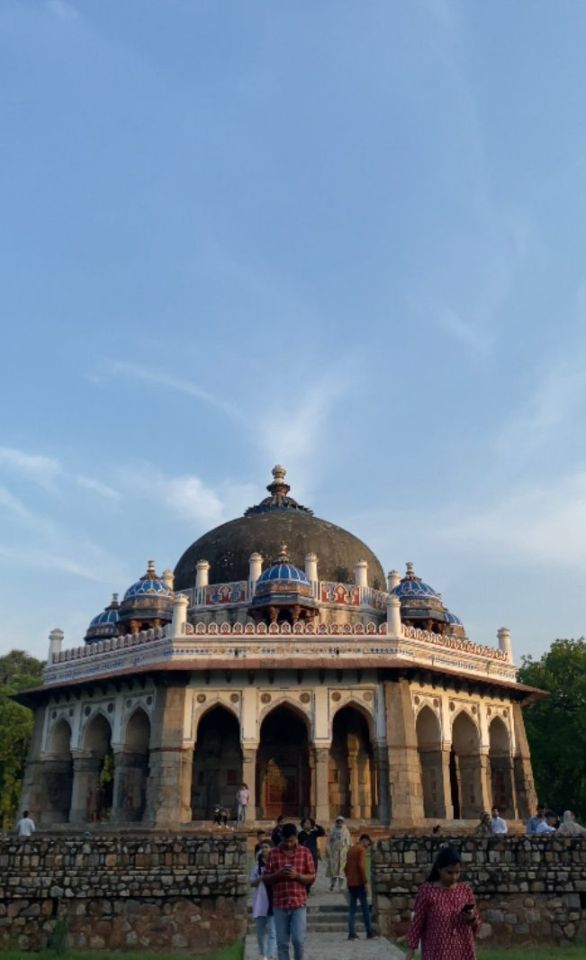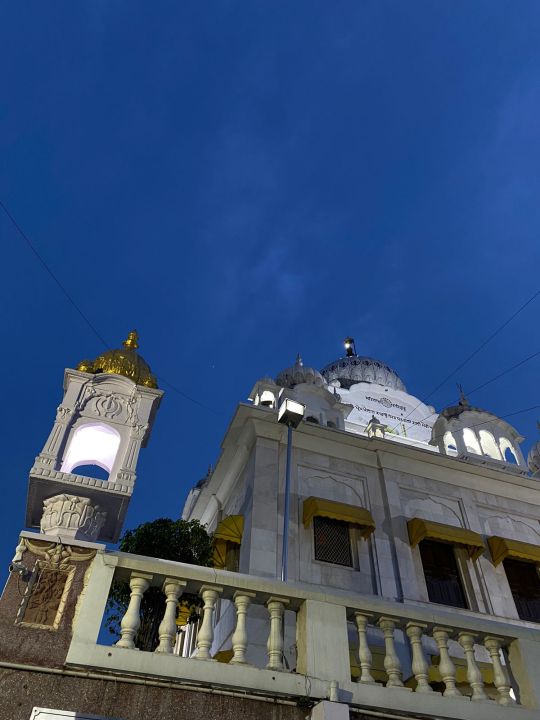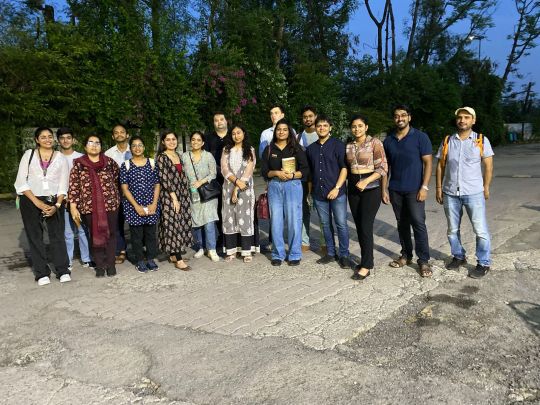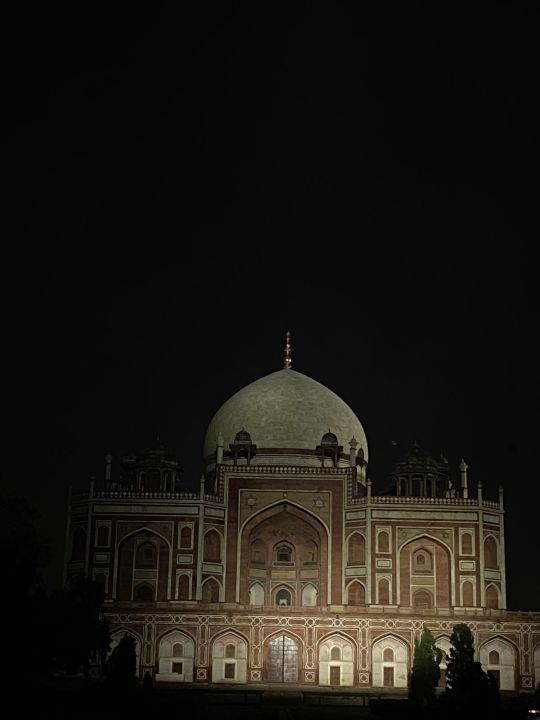#dara shukoh
Explore tagged Tumblr posts
Text

Dara Shukoh, Avik Chanda (History, 372 Pages, Hardcover, HarperCollins Publishers India)
2 notes
·
View notes
Text
Let's talk about the idolized Aurangzeb. What he did and why is he considered great?

We will be focusing on the destruction of temples and hindu genocide done by him to debunk claims deny that this.
By the order of Aurangzeb (1645 AD) according to Mirãt-i-Ahmadî, Temple of Chintaman situated close to Sarashpur (Gujarat) and built by Sitaldas jeweller was converted into a mosque named Quwwat-ul-lslam (might of Islam) (1645 AD.) A cow was slaughtered to 'solemnize' the 'ceremony'.
Slaughtering a cow was a heinous choice, cow being one of the holiest animal in Hinduism. As well as, Hinduism prohibits animal slaughter, to do it right where their place of worship used to be where now stands a Mosque was simply to mock and destroy the souls of the indigenous population. The Pandits and Cows were always their main targets.
This was done before he even became the king, he was just a prince at this point.
When he became the king he sent Mir Jumla on an expedition to Cooch Bihar. Mir Jumla demolished ALL temples in that city and erected mosques in their stead. The general himself wielded a battle-axe to break the image of Narayana.
Mirãt-i-Ahmadî continues, In 1666 AD, he ordered the faujdar of Mathura to remove a stone railing which had been presented by Dara Shukoh to the temples of Keshav Rai. He explained: “In the Muslim faith it is a sin even to look at a temple and this Dara had restored a railing in a temple!”
You can still argue that Islamic Colonization simply had a political motif and not a religious one, if that would have been the case, none of the indigenous people would have been harmed, none of them would have been forcefully converted, their heritage would not have been destroyed right in front of their eyes, their schools and texts would have been burned. This is downright evil and was done in the name of Allah by all the Mughal tyrants.
“The richly jewelled idols taken from the infidel temples were transferred to Agra and placed beneath the steps leading to the Nawab Begum Sahib's (Jahanara's) mosque in order that they might be “pressed under foot by the true believers”. Mathura changed its name into Islamabad and was thus called in all official documents.”
In the same year, Sita Ram ji temple at Soron was destroyed as also the shrine of Devi Patan at Gonda. News came from Malwa also that the local governor had sent 400 troopers to destroy all temples around Ujjain.
According to Muraqat-i-Abul Hasan, civil officers, agents of jagirdars, karoris and amlas from Cuttack in Orissa to Medinipur in Bengal were instructed as follows:
“Every idol house built during the last 10 or 12 years' should be demolished without delay. Also, do not allow the crushed Hindus and despicable infidels to repair their old temples. Reports of the destruction of temples should be sent to the court under the seal of the qazis and attested by pious Shaikhs.”
(1672 AD) several thousand Satnamis were slaughtered near Narnaul in Mewat for which act of 'heroism' Radandaz Khan was tided Shuja'at Khan with the mansab of 3000 and 2000 horse.
(1675 AD) Guru Tegh Bahadur was tortured to death for his resistance against the forcible conversion of the Hindus of Kashmir. The destruction of gurudwaras thereafter is a well-known story which our secularists have succeeded in suppressing because the Akali brand Sikhs have been forging ties of friendship with Islam as against their parent faith, Hindu Dharma.
Mirãt-i-Ahmadî goes ahead: “On 6th January 1680 A.D. Prince Mohammad Azam and Khan Jahan Bahadur obtained permission to visit Udaipur. Ruhullah Khan and Yakkattaz Khan also proceeded thither to effect the destruction of the temples of the idolators. These edifices situated in the vicinity of the Rana's palace were among the wonders of the age, and had been erected by the infidels to the ruin of their souls and the loss of their wealth”. Pioneers destroyed the images. On 24th January the king visited the tank of Udayasagar.
His Majesty ordered all three of the Hindu temples to be levelled with the ground. On 29th January Hasan AN Khan made his appearance' and stated that “172 temples in the neighbouring districts had been destroyed.” His Majesty proceeded to Chitor on 22nd February.
Temples to the number of 63 were destroyed. Abu Tarab who had been commissioned to effect the destruction of idol temples of Amber, reported in person on 10th August that 66 temples had been levelled to the ground.’ The temple of Someshwar in western Mewar was also destroyed at a later date in the same year. It may be mentioned that unlike Jodhpur and Udaipur, Amber was the capital of a state loyal to the Mughal emperor.
Khafi Khan records in his Muntakhab-ul-Lubab: ‘On the capture of Golconda, the Emperor appointed Abdur Rahim Khan as censor of the city of Haiderabad with orders to put down infidel practices and innovations, and destroy the temples and build mosques on the sites.’ That was in 1687 AD. In 1690 AD, he ordered destruction of temples at Ellora, Trimbakeshwar, Narasinghpur, and Pandharpur.
Aurangzeb also destroyed, Kashi Vishwanath Temple in Kashi, Uttar Pradesh - which considered as the most scared hindu temple and land.
In 1698 AD, the story was repeated at Bijapur. According to Mirat-i-AhmadT: 'Hamidud-din Khan Bahadur who had been deputed to destroy the temples of Bijapur and build mosques there, returned to court after carrying out the order and was praised by the Emperor.' As late as 1705 AD, two years before he died, 'the emperor, summoning Muhammad Khalil and Khidmat Rai, the darogha of hatchet-men' ordered them to demolish the temple of Pandharpur, and to take the butchers of the camp there and slaughter cows in the temple.' Cow-slaughter at a temple site was a safeguard against Hindus rebuilding it on the same spot.
The saddest part is, all of this information, the bloodiest part of Indian History is never shown to the people, they grow up learning, Mughals were great emperors that built great things. When none of that holds any ounce of truth. It should be said without any censorship, these tyrants destroyed the culture, tradition and religions of India.
With all this information, if you're still defending these tyrants, if you still "want them around", if you still insist "it wasn't that bad", you absolutely do not care about "human rights", every activism you take part in is just performative. And I do not respect you or your opinion on any social issue.
#aurangzeb#mughal empire#hinduphobia#ancient india#colonisation in india#temple destruction#mughal invasion#hindublr#hindu temples#pseudo secularism#hindu genocide
88 notes
·
View notes
Text
This is only for emperors, if you are going for Someone Else they have to have been an emperor at some point. So no Dara Shukoh or any of the queens. I might make a different poll for the queens if this takes off.
Don't vote on the basis of politics - they were all objectively bad people and this is a fun poll. Vote for who you think is the most blorbo and/or who you think you can fix etc.
#mughal empire#mughals#mughal history#india#indian history#history#history polls#south asia#south asian#desiblr#desi tumblr#desi academia#polls#babur#akbar#shah jahan#auranzeb#delhi
11 notes
·
View notes
Video
youtube
Dara Shukoh - The Forgotten Mughal Prince | Keerthi History
0 notes
Text
Raat Ke Afsane : Heritage Walk in Humayun Tomb

The night tours in Delhi are a unique way to experience the city of Delhi. There are several monuments that are open at night for sightseeing. Enroute Indian History since 2019 has been conducting Raat ke Afsane, literally, stories told at night, after sunset. These walking tours are conducted at several monuments in the city of Delhi. The guided walk teaches about monuments, the history of Delhi, the art and the architecture of the heritage site.

One of our recently started night walks is inside the complex of Humayun Tomb. The heritage walk takes the visitors and history enthusiasts inside the Humayun Tomb complex and then takes them around the neighborhood of Humayun Tomb as we explore lesser known gems such as Dum Dama Sahib, Sabz Burj, Nizamuddin Chillgah, and Patte Shah ka Dargah.

Humayun Tomb is a 90 acre heritage garden complex which was built by Hajji Begum the first wife of Emperor Humayun of the Mughal Dynasty. The entire area has several garden tomb complexes such as the Bu Halima, Isa Khan’s tomb, Afsarwala Tomb, Arab ki Serai. The history buffs are taken to various sites and are given detailed history of the heritage buildings,weaving together the narrative of Delhi.

During the Raat Ke Afsane : Humayun Tomb monument walk, participants were thrilled to see the dome of the tomb lit up. The double dome is twice the height of the main building. The dormitory of Mughals as Humayun tomb is called has graves of Emperor Humayun, Hajji Begum, Hamida Banu Begum and around 60 more Mughal graves. It is believed that Dara Shukoh too is buried in the dormitory. However, his body remains unidentified.

Many participants were in awe when they saw the monument lit up against the dark sky on a full moon night. The monument oddly looks like a 2-D cardboard at night and it seems unfathomable that the monument is indeed a real thing. If you are someone who loves sightseeing in Delhi and exploring heritage but are hesitant to go alone these guided walks are an easy, affordable and a safe option which assist you on every step to enjoy these historical places in a large comfortable group of like minded people.
#Tours#Sight Seeing#Tour Services#Travel#Arts & Entertainment#Libraries & Museums#Tourist Destinations#People & Society#Jobs & Education#Specialty Travel#heritage tours#heritage walks#Delhi Heritage Walks#Guided walks in Delhi#History walks in Delhi#heritage walks in Delhi#custom heritage walks#Night Walks in Delhi#Morning Walks in Delhi#Delhi walking#Heritage trails in Delhi#Old Delhi Walks#Walking tours in Delhi#History of Delhi#Ladies Walk in Delhi#Historic trails in Delhi#history walks#Delhi city walks#Historic Delhi#the heritage walk
1 note
·
View note
Text

#BookReview - The Mughal empire in then India or Hindusthan is one of history’s most talked about eras. But, among all the emperors, Akbar has gained a special place in history, and most of the monuments now that exist are from his age and later. Be it the Agra Fort or the Taj Mahal; it showcases the enriched heritage of his era. People lived in harmony until Aurangazeb reigned and ruined the country.
This book talks about the Mughal prince Dara Shukoh who, in his lifetime, always strived to find common ground in different religions and the history of India. He was also as a person less cruel compared to his contemporaries and brother Aurangazeb. But he never had a chance to sit on the throne and rule the country. Even if he would, he won’t live longer!
This fast-paced historical novel, Misfortune’s Favourite: The Tragic End of Dara Shukoh by Srinivas Rao Adige tells us the story of the unlucky Mughal prince whose fortune always proved unlucky time and again. The novel starts at Agra fort, where Dara and his companions are set to flee from his rebel brothers Aurangzeb and Murad after their defeat in a battle.
Grab your copy now!
Check out the review here - https://tinyurl.com/yt6mbw8c
#booksbooksbooks#booksofinstagram#storizenmagazine#bookslover#bookrecommendations#bookstagram#books#bookreview#bookshelves#bookreviewer
0 notes
Text

The Quran; A New Translation by Thomas Cleary - Amazon
Slow Reading in a Hurried Age [Hardcover] - Kinokuniya - BookDepository
The Two Greatest Ideas : How Our Grasp of the Universe and Our Minds Changed Everything (Soochow University Lectures in Philosophy) [Hardcover] Kinokuniya - BookDepository
The C. S. Lewis Signature Classics : An Anthology of 8 C. S. Lewis Titles: Mere Christianity, the Screwtape Letters, Miracles, the Great Divorce, the Problem of Pain, a Grief Observed, the Abolition of Man, and the Four Loves [Paperback] Kinokuniya
Muhammad : Prophet of Peace Amid the Clash of Empires [Hardcover] Kinokuniya - BookDepository
An Introduction To Islamic Theology - Imam Nur Al Din Al Sabuni’s Al Bidayah Fi Usul Al Din - Zaytuna Book store
Treatise on Maqasid al-Shari'ah - BookDepository
Bhagavad Gita: A New Translation - Kinokuniya
The Emperor Who Never Was : Dara Shukoh in Mughal India [Hardcover] - Kinokuniya
The Secret of Golden Flower [Paperback] - Kinokuniya - BookDepository
An Essay on Man [Paperback] - Kinokuniya - BookDepository
Black Rednecks and White Liberals - Kinokuniya
Meditation by Marcus Aurelius - pending
The Devil Knows Latin: Why America Needs the Classical Tradition - Amazon
The unfinalised list
0 notes
Text
The fact that Dara Shukoh was executed for having Allah on one side of his ring and Prabhu on the other makes me so sad.
8 notes
·
View notes
Text
Dara Shikoh Road Aurangzeb Brother Was The Most Misfortune Prince Pk | दाराशिकोह: इतिहास का सबसे अभागा राजकुमार
Dara Shikoh Road Aurangzeb Brother Was The Most Misfortune Prince Pk | दाराशिकोह: इतिहास का सबसे अभागा राजकुमार
[ad_1]

<!--
Loading... -->
दिल्ली की डलहौजी रोड का नाम अब दाराशिकोह मार्ग होगा. दाराशिकोह यानी भारतीय इतिहास का सबसे अभागा राजकुमार. एनडीएमसी के चेयरमैन नरेश कुमार ने इसकी आधिकारिक घोषणा कर दी है. पांच महीने पहले रेस कोर्स रोड को लोक कल्याण मार्ग नाम दे दिया गया था. उससे पहले औरंगजेब रोड को एपीजे अब्दुल कलाम…
View On WordPress
0 notes
Photo

Portrait of Dara Shukoh c1650 From the Collection of Archibald Swinton.
154 notes
·
View notes
Text
Takht (2022) Release Date, Trailer, Songs, Cast & Synopsis

Movie Name: Takht (2022)
Release Date:January 31, 2022
Language: Hindi
Genre: Action, Drama, History
Cast:Ranveer Singh, Kareena Kapoor Khan, Alia Bhatt, Vicky Kaushal, Bhumi Pednekar, Janhvi Kapoor, Anil Kapoor
Director:Karan Johar
Writer:Sumit Roy, Hussain Haidry
Cinematography: Mitesh Mirchandani
Music: Hussain Haidry
Producer: Karan Johar
Production: Dharma Productions
Certificate:U/A
Synopsis:Takht is a multi-starrer historical-action drama set in the Mughal Era, with a prime focus on the infamous enmity between his sons Aurangzeb and Dara Shukoh, who got into a gruesome battle of succession after Shah Jahan’s health decayed. As mentioned in several historical accounts, Aurangzeb (Vicky Kaushal) had a corrosive loathing for his elder brother Dara (Ranveer Singh), who was a liberal Muslim, spotted frequently in the company of yogi, sanyasis and brahmins.
Dear to both Shah Jahan (Anil Kapoor) and his elder sister Jahanara Begum (Kareena Kapoor Khan), who was a celebrated name in the Empire herself, Dara was a natural choice for the next successor- an idea that Aurangzeb couldn’t stand. Meanwhile, Roshanara Begum (Bhumi Pednekar)- his other sister had a secret sore spot for Jahanara Begum for always being overshadowed by her popularity and glamour. With a deeply ingrained hatred and infuriation, she decides to help Aurangzeb in his vicious plans of battling Dara, imprisoning Shah Jahan, and taking over the Throne himself.
Takht POSTERS & PHOTOS

Takht Latest Videos & Trailers
youtube
Source: https://www.decadeslife.com/takht-2022/
2 notes
·
View notes
Video
youtube
Dara Shukoh
1 note
·
View note
Text
Letters are the Evidence in Aurangzeb Versus Dara Shukoh Battle
Letters are the Evidence in Aurangzeb Versus Dara Shukoh Battle
[ad_1]
Even today, when one talks about a Mughal emperor, the pictures of Aurangzeb and Dara Shukoh flash before the eyes. The name of the third big actor is Shahjahan whose inclination towards one of his sons made his other sons rebellious.
It seems, today the big section of the country has become soldiers of Aurangzeb’s army while others seems to be standing with Dara. According to their…
View On WordPress
0 notes
Text
#i actually hope they leave charu majumdar alone ngl#i KNOW we've had a binay badal dinesh movie but it was shit so it doesn't count#desi tag#desi tumblr#desiblr#indian history#south asian history#south asia
1 note
·
View note
Photo

detail from Album of Prince Dara Shukoh, Mughal
43 notes
·
View notes
Photo

Happy Birthday, M S Sathyu Saab. Mysore Shrinivas Sathyu (born in Mysore, Karnataka) is a film director, stage designer and art director from India. He is best known for his directorial film Garam Hawa (1973) is based on the partition of India. He was awarded Padma Shri in 1975. His first assignment as an independent Art director was for Haqeeqat, a film by Chetan Anand, which got him the Filmfare Award in 1964 and along with that came recognition. He also did work in theatre as a designer and director, including designing sets and lights for productions of Hindustani Theatre, Okhla Theatre of Habib Tanvir, Kannada Bharati and other groups of Delhi. In films, he has worked as an art director, camera-man, screenwriter, producer and director. His filmography includes over 15 documentaries and 8 feature films in Hindi, Urdu and Kannada. His best known work, Garam Hawa (Scorching Winds, 1973), is one of the last cinema productions featuring 1950s Marxist cultural activists including Balraj Sahni and Kaifi Azmi. Garam Hawa won several Indian national awards in 1974, including a National Integration Award. It was invited for the competitive section at Cannes and also the Indian entry at the Oscars, and achieved a Filmfare award for best screenplay. M. S. Sathyu currently is associated mainly with television and stage. In 2013, Sathyu featured in the popular Google Reunion ad, where he played the role of Yusuf, an elderly Pakistani man who is reunited with his childhood pre-partition friend from India, Baldev (Vishwa Mohan Badola). Mr. Sathyu is one of the patrons of Indian People's Theatre Association (IPTA). His Play 'Dara Shikoh' is considered a modern classic which was staged by Impresario Asia in Delhi in 2003-4. In the words of noted critic Ramesh Chand Charlie the Stage Play 'Dara Shikoh' is a turning point of traditional theatrical sensibilities. Use of Wali Deccani's period poetry provides this Play with a very rare artistic and historical context. Dazzling use of Kathak choreography by Rani Khanum and her Troupe, and authentic costumes including head gear, swords and period art work was a treat for the eyes. Exemplary use of Sufi music, context and ambiance was very alluring and mesmerising. This Play had a good run at cities like Delhi, Gurgaon and Banglore. There are reports that this Play is also being converted into a Feature Film under the Direction of Sathyu. It goes to his credit that this Play revived interest in the life and ideals of Dara Shukoh and later Gopal Gandhi's Dara Shikoh and Pakistan's Ajoka Group also brought Dara Shukoh to the stage. Amrita: A sublime Love Story is another innovative Play which is based upon the life and writings of famous Punjabi writer Amrita Preetam. Written by Danish Iqbal this play brings into focus the perpetual mystic love of Amrita Preetam. This Play reciprocate his earlier Play 'Sahir' on Sahir Ludhiyanvi which was directed by Pramila Le Hunt. In 2013, he also appeared in the Reunion television commercial as a Pakistani old man, reunited with his childhood friend from India. The commercial went viral on social media. In 2014, his debut film, Garam Hawa was re-released after restoration.
5 notes
·
View notes